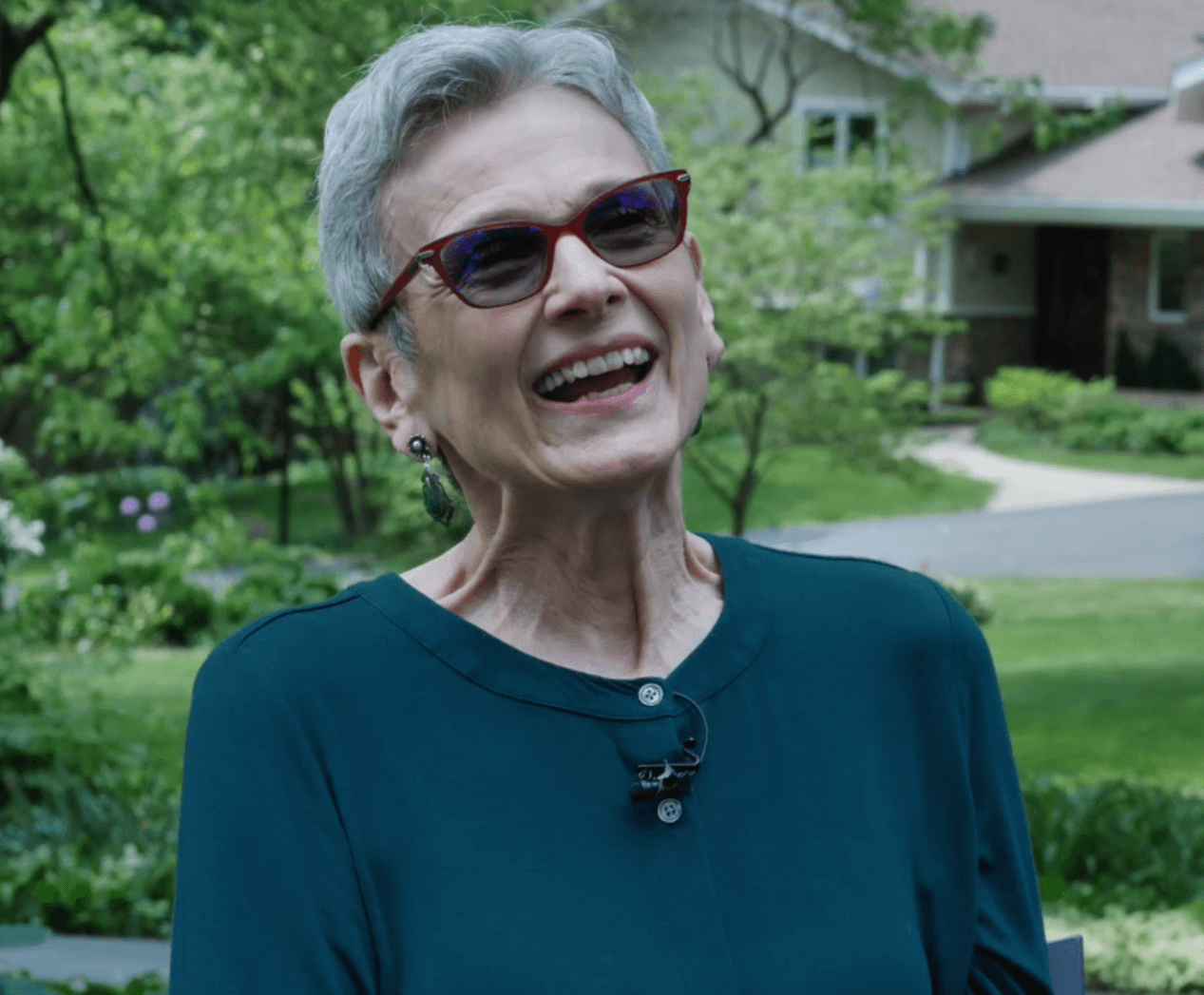All the king’s horses and all the king’s men could not put Peggy Lami back together again, but along comes Carla Adams OD and the team at the Mind-Eye Institute. Suddenly, after 30 years of struggles, “I am feeling like myself again,” Peggy says. The latest version of Humpty Dumpty is finally being made whole.
“I have not even received my first pair of Mind-Eye glasses yet. I have just been wearing prism goggles and using color filters up until now. But, family, neighbors, friends are already telling me, ‘You are looking and doing so much better,’” reports Peggy, a Glen Ellyn, Illinois resident and survivor of a series of brain hemorrhages.
Though the birth defect responsible for Peggy’s recurring strokes has since been corrected through surgery, the hemorrhages have damaged both sides of her brain. “My right side causes me mobility and balance problems. On my left, I lack sensation. In the shower, I feel bone dry on my left side.”
Complicating the brain injuries have been her depression and chronic fatigue. “After an enormous crash of fatigue in 2019, I was eventually forced to hire a household helper several days a week,” Peggy relates. “I was too exhausted to do laundry. I could not cook or stand at the sink and wash dishes.” Additionally, she experienced constant fight-or-flight stress and was easily startled by any and everyone.
That is until she started getting help from several unrelated health care practices, including the Mind-Eye Institute in Northbrook, Illinois.
“It was a specialist in functional neurology who directed me to the Mind-Eye Institute. I went to the Institute’s web site and watched the testimonials of patients, many of whom were recovering from symptoms worse than mine. I cried when I saw the videos – and right away called the Mind-Eye for an appointment,” Peggy recalls.
“Using eyeglasses and other optometric interventions to change the way light passes through the retina can modify the dynamic relationship between the mind’s visual inputs and the body’s internal reactions and responses. The implication is that retinal stimulation with light can intentionally promote customized changes in a patient’s systems involved in metabolism, motor control, posture, mood, circadian rhythms, and decision-making abilities,” explains Deborah Zelinsky OD.
Dr. Zelinsky is an internationally recognized expert on visual processing, who founded the Mind-Eye Institute.
These “customized changes” to the brain are what oftentimes bring relief to patients experiencing the headaches, brain fog, concentration and attention difficulties, and constant fight-or-flight stress due to brain injury or genetic mutations and disease, Dr. Zelinsky notes.
Dr. Adams, the Mind-Eye optometrist leading Peggy Lami’s care, concurs. “Finding the appropriate eyeglass lenses to address Peggy’s specific issues is already making a difference in her spatial organization.”
Dr. Adams was referring to Peggy’s ability to touch a ringing bell and the ball tip of a pointer when a specific type of lens was placed over her closed eyes during the Mind-Eye Z-Bell Test™. The patented test helps determine whether the environment is in sync or just plain confusing for a patient. Using therapeutic lenses, filters, and/or prisms, Mind-Eye optometrists can readjust a patient’s visual balance and eye-ear integration.
“Visual processing, when intact, enables people to understand and interact appropriately with the world around them. However, if brain circuitry is not synchronized because it is underdeveloped or, as in Peggy Lami’s case, disrupted by trauma or disease, people can become confused about their surrounding environment and exhibit inappropriate reactions and responses. If eyes and ears are not integrated, people have to continuously shift attention, and that effort becomes exhausting,” Dr. Zelinsky explains.
Meanwhile, Peggy agrees with Dr. Adams that she must be patient. Efforts to affect and reroute the disrupted signaling pathways in her brain will take time.
“I have struggled for decades with my symptoms and, until now, been relying on certain neurological pathways to compensate for my deficits. But I have great hope for the future.” she notes. “Optometry is doing amazing things for patients today. The field has become much more advanced than simply helping patients see 20/20. Dr. Zelinsky is right. Leave 20/20 in the 20th century – patients with brain injuries need more testing.”
Although Peggy Lami reports progressive symptom relief, her experience is not always the norm, nor is it guaranteed for every patient. Check out the Mind-Eye Institute at www.mindeye.com for additional information.

